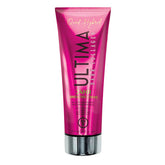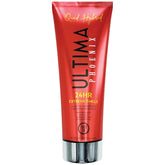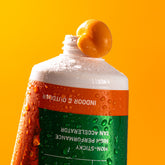Everything You Need to Know for Tanning Your Legs
Everything You Need to Know for Achieving Golden Bronze Legs
Achieving a flawless, even tan can be tricky, particularly regarding your legs. Due to lower melanin production and thicker skin, legs often demand extra attention and care during tanning sessions. In this blog, we'll delve into the best methods for tanning your legs using indoor sunbeds and natural UV light outdoors. We suggest top-notch tanning accelerator creams with bronzers to help you reach that stunning glow even faster.
Why Legs Are Sometimes Hard to Tan: Tanning legs can be more challenging for several reasons:
- The skin on your legs is thicker and has less melanin than other body parts, meaning it takes more time and effort to achieve the desired tan.
- Blood circulation in your legs can be less efficient, resulting in slower tanning.
- The natural oils on your skin, which help absorb UV light, are typically lower on the legs, making it harder for them to tan.
Best Methods for Tanning Your Legs with Indoor Sunbeds:
- Exfoliate before your session: Exfoliating your legs before tanning will remove dead skin cells and allow more even tanning. This also helps your skin absorb tanning accelerator creams more effectively.
- Use a high-quality tanning accelerator cream with a bronzer: Applying a tanning accelerator cream can significantly enhance your tanning results. We recommend trying Extreme Rapid Tanning Gel and Power Tan Non-Stop Black Hybrid Sunbed Accelerator Cream for a deeper, longer-lasting tan. Using a product with a bronzer will further speed up the process.
- Position your legs correctly: When using a sunbed, ensure your legs are not touching each other, which can create uneven tanning. Also, elevate your legs slightly to improve blood circulation, which can help achieve a better tan.
- Rotate your body: To ensure an even tan, rotate your body during your tanning session. Spend time lying on your back, front, and sides to expose all parts of your legs to the UV light evenly.
- Increase your tanning time gradually: To avoid overexposure, start with shorter sessions and gradually increase the duration as your legs tan. This will allow your skin to build a base tan and prevent burning.
Tips for Tanning Your Legs Outdoors in Natural UV Light:
- Choose the right time of day: The sun's rays are strongest between 10 a.m. and 3 p.m. To get the best tan on your legs, expose them to the sun during this time. However, be mindful of the risk of sunburn and avoid overexposure.
- Apply sunscreen: Even when tanning outdoors, protecting your skin from harmful UV rays is essential. Use broad-spectrum sunscreen with at least SPF 30, and reapply every two hours or after swimming or sweating.
- Use a tanning accelerator with a bronzer: Like indoor tanning, a tanning accelerator cream can enhance your results outdoors. We recommend trying Extreme Rapid Tanning Gel and Power Tan Non-Stop Black Hybrid Sunbed Accelerator Cream for a deeper, longer-lasting tan. Adding a bronzer will help you achieve your desired shade more quickly.
- Move and rotate: To achieve an even tan on your legs, change your position frequently while sunbathing. This will help expose all parts of your legs to the sun evenly.
- Stay hydrated: Drinking plenty of water and applying a moisturizing lotion after sun exposure will help maintain your skin's health and prolong your tan's life.
Summary: Fast Way To Get Tanned Legs
Tanning your legs using indoor sunbeds or natural UV light outdoors can be a breeze when you follow these helpful tips. Remember to exfoliate, use high-quality accelerator creams with bronzers, position your legs correctly, rotate your body, and increase your tanning time gradually.
By following these steps, you'll soon achieve beautifully bronzed legs that are the envy of all your friends. Whether you're tanning indoors or outside, incorporating these tips into your tanning routine will ensure the fastest and most effective way to get those golden bronze legs you've always desired.












Leave a comment
Please note, comments need to be approved before they are published.